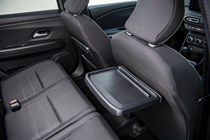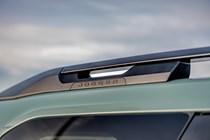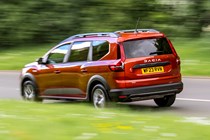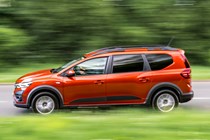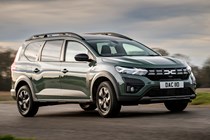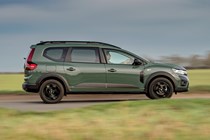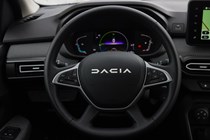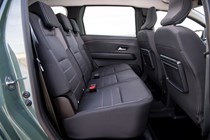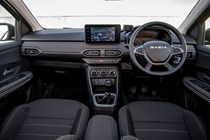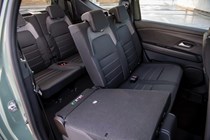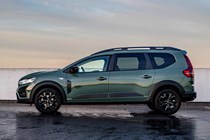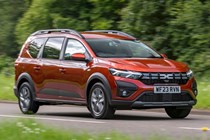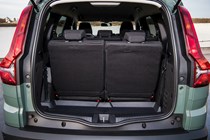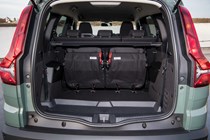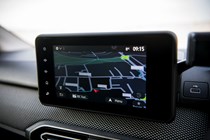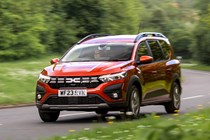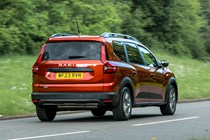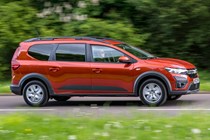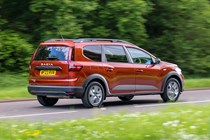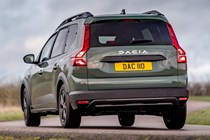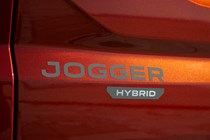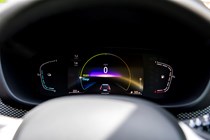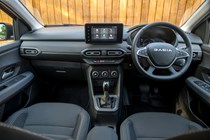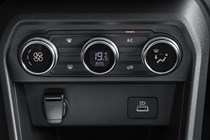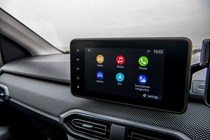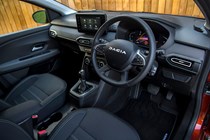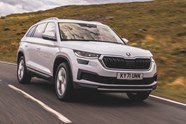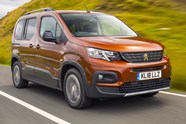Dacia Jogger review
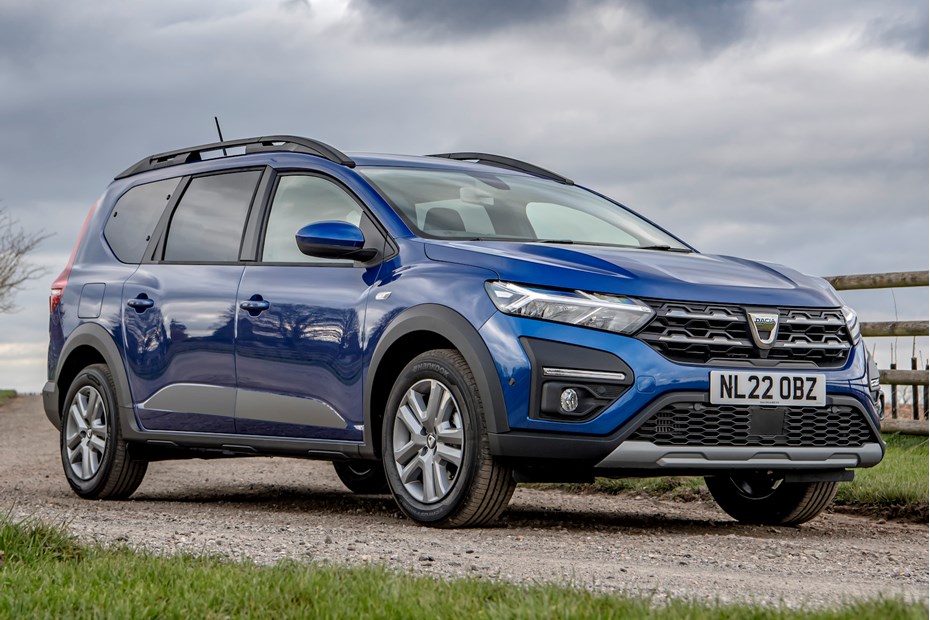
At a glance
| Price new | £18,970 - £24,305 |
|---|---|
| Used prices | £10,666 - £21,888 |
| Road tax cost | £195 |
| Insurance group | 13 - 16 |
Get an insurance quote with

|
|
| Fuel economy | 47.1 - 58.9 mpg |
| Miles per pound | 6.9 - 8.6 |
| Number of doors | 5 |
| View full specs for a specific version | |
Available fuel types
Petrol
Hybrid
Pros & cons
- Incredibly spacious for its size
- Bargain price tag
- Comfortable and easy to drive
- Interior looks rather low-rent
- No diesel engine option
- Seat layout isn’t that flexible
Dacia Jogger SUV rivals
Overview
The Dacia Jogger is described by its manufacturer as ‘blending the practicality of an estate car with the spaciousness of an MPV and the styling of an SUV.’ We reckon that’s a great summary of what is a brilliant family car.
In essence, the Jogger is a big car for small car money, making it perfect for buyers on a budget. It can comfortably seat seven adults or carry an impressive amount of gear. Indeed, we consider it not just an MPV but also one of the best hybrid estates available and it won Best Value Car for 2023 in the Parkers New Car Awards.
The Jogger is based on the same basic platform that underpins many Renault products, including the Dacia Sandero and Renault Clio superminis as well as the Renault Captur SUV. But it’s stretched out to the max, the Jogger measuring more than 4.5m long with a wheelbase of around 2.9m.
The Jogger isn’t Dacia’s first MPV. It’s actually the third generation in line that’s been sold under various names since the early 2000s. But the Jogger in the first to be sold in the UK since its launch in 2021. We’ve tested numerous examples of the Jogger since then, including a six-month long-term test.
Rivals? Well, Dacia’s pricing means the Jogger competes better with used cars than brand-new models. With seven seats and huge practicality, it’s a natural rival to van-based MPVs such as a second-hand Citroen Berlingo, Peugeot Rifter or Volkswagen Caddy. It’s also an alternative to smaller seven-seat SUVs such as the Skoda Kodiaq.
And there are plenty of owners who remove the third row of seats and use the Jogger as a five-seat estate with a huge boot. At that point it becomes a rival to the likes of the SEAT Leon Estate and Kia Ceed SW, and a more direct replacement for the old Dacia Logan MCV.
Dacia makes life really simple when it comes to buying a Jogger. There are just two engines –including a hybrid – and three trim levels to choose from. All models come well-equipped with essentials like air-con, parking sensors and cruise control. Where the Jogger loses out – and something had to give for the price – is on safety equipment. Its lack of driver assistance features means it scored just one star in Euro NCAP‘s safety assessment.
Over the next few pages, we’ll thoroughly review all aspects of the Dacia Jogger and rating them in our verdict. Along the way, we’ll consider the car’s driving experience, the quality and comfort of its interior, the level of practicality and how much it’ll cost you to keep it on the road.



